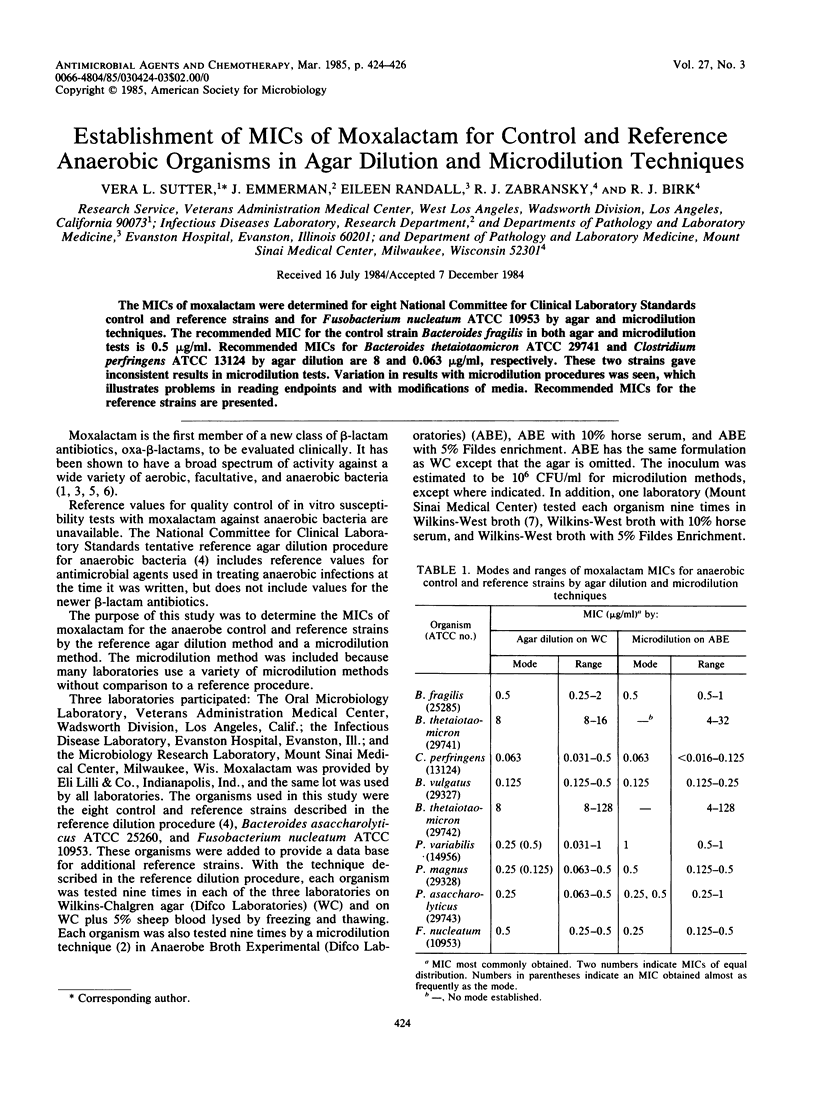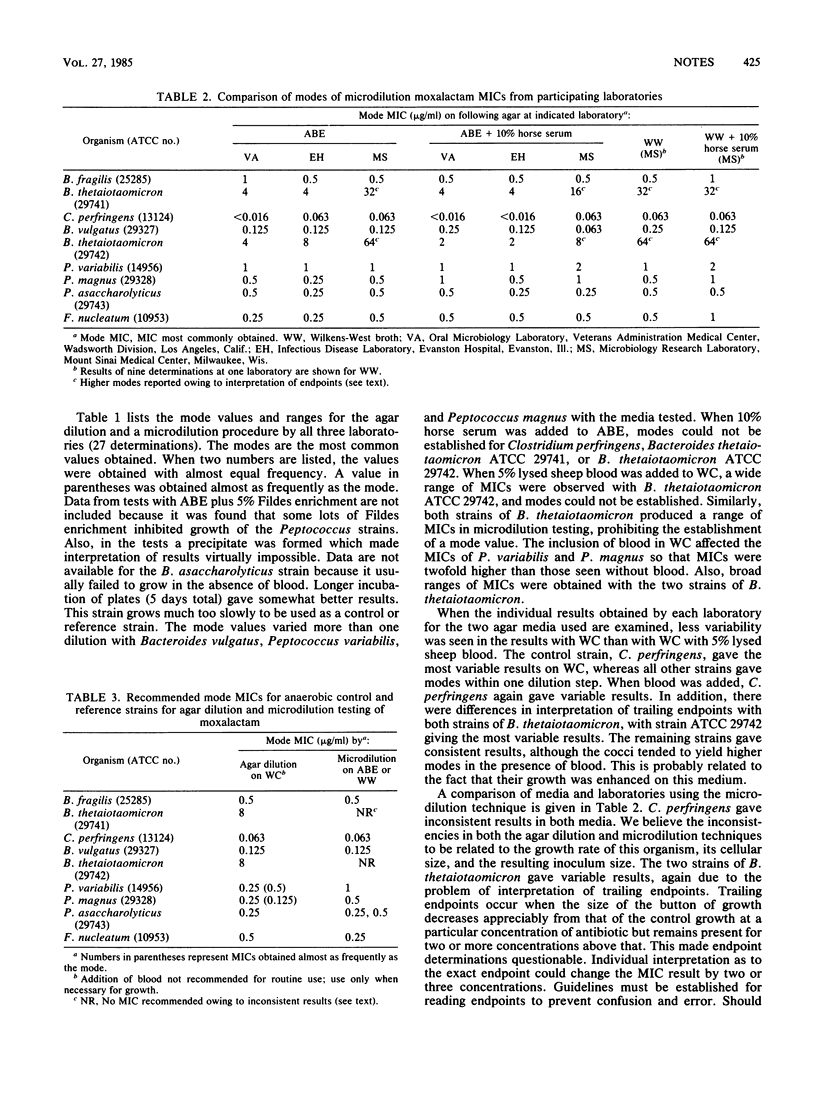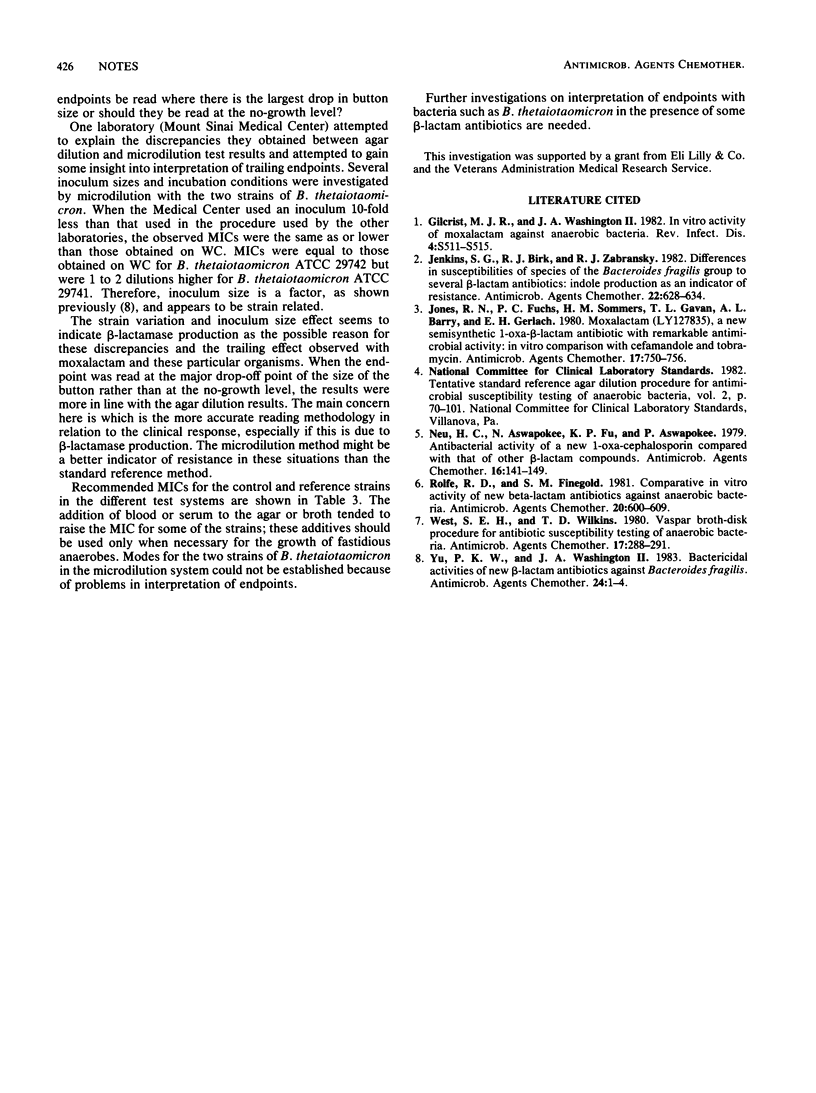Abstract
The MICs of moxalactam were determined for eight National Committee for Clinical Laboratory Standards control and reference strains and for Fusobacterium nucleatum ATCC 10953 by agar and microdilution techniques. The recommended MIC for the control strain Bacteroides fragilis in both agar and microdilution tests is 0.5 micrograms/ml. Recommended MICs for Bacteroides thetaiotaomicron ATCC 29741 and Clostridium perfringens ATCC 13124 by agar dilution are 8 and 0.063 micrograms/ml, respectively. These two strains gave inconsistent results in microdilution tests. Variation in results with microdilution procedures was seen, which illustrates problems in reading endpoints and with modifications of media. Recommended MICs for the reference strains are presented.
Full text
PDF


Selected References
These references are in PubMed. This may not be the complete list of references from this article.
- Gilchrist M. J., Washington J. A., 2nd In vitro activity of moxalactam against anaerobic bacteria. Rev Infect Dis. 1982 Nov-Dec;4 (Suppl):S511–S515. doi: 10.1093/clinids/4.supplement_3.s511. [DOI] [PubMed] [Google Scholar]
- Jenkins S. G., Birk R. J., Zabransky R. J. Differences in susceptibilities of species of the Bacteroides fragilis group to several beta-lactam antibiotics: indole production as an indicator of resistance. Antimicrob Agents Chemother. 1982 Oct;22(4):628–634. doi: 10.1128/aac.22.4.628. [DOI] [PMC free article] [PubMed] [Google Scholar]
- Jones R. N., Fuchs P. C., Sommers H. M., Gavan T. L., Barry A. L., Gerlach E. H. Moxalactam (LY127935), a new semisynthetic 1-oxa-beta-lactam antibiotic with remarkable antimicrobial activity: in vitro comparison with cefamandole and tobramycin. Antimicrob Agents Chemother. 1980 Apr;17(4):750–756. doi: 10.1128/aac.17.4.750. [DOI] [PMC free article] [PubMed] [Google Scholar]
- Neu H. C., Aswapokee N., Fu K. P., Aswapokee P. Antibacterial activity of a new 1-oxa cephalosporin compared with that of other beta-lactam compounds. Antimicrob Agents Chemother. 1979 Aug;16(2):141–149. doi: 10.1128/aac.16.2.141. [DOI] [PMC free article] [PubMed] [Google Scholar]
- Rolfe R. D., Finegold S. M. Comparative in vitro activity of new beta-lactam antibiotics against anaerobic bacteria. Antimicrob Agents Chemother. 1981 Nov;20(5):600–609. doi: 10.1128/aac.20.5.600. [DOI] [PMC free article] [PubMed] [Google Scholar]
- West S. E., Wilkins T. D. Vaspar broth-disk procedure for antibiotic susceptibility testing of anaerobic bacteria. Antimicrob Agents Chemother. 1980 Feb;17(2):288–291. doi: 10.1128/aac.17.2.288. [DOI] [PMC free article] [PubMed] [Google Scholar]
- Yu P. K., Washington J. A., 2nd Bactericidal activities of new beta-lactam antibiotics against Bacteroides fragilis. Antimicrob Agents Chemother. 1983 Jul;24(1):1–4. doi: 10.1128/aac.24.1.1. [DOI] [PMC free article] [PubMed] [Google Scholar]


